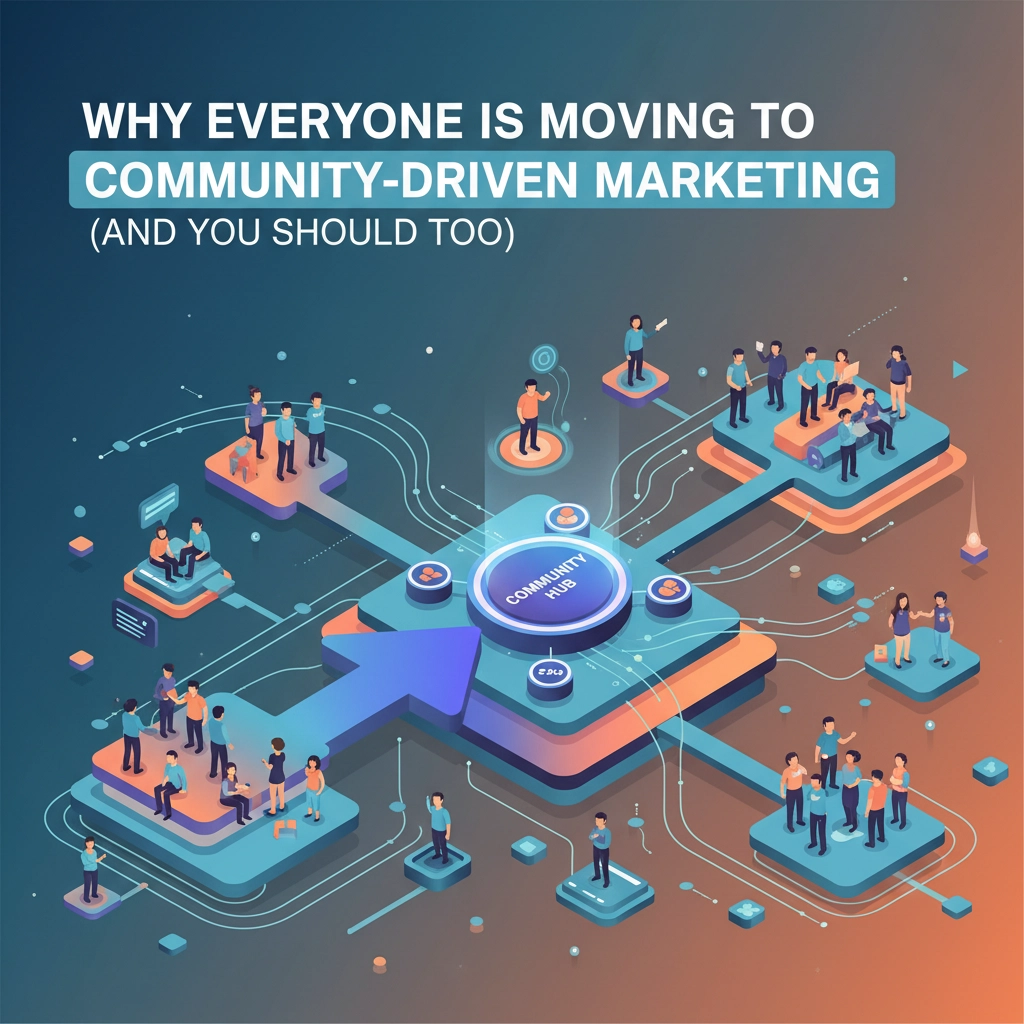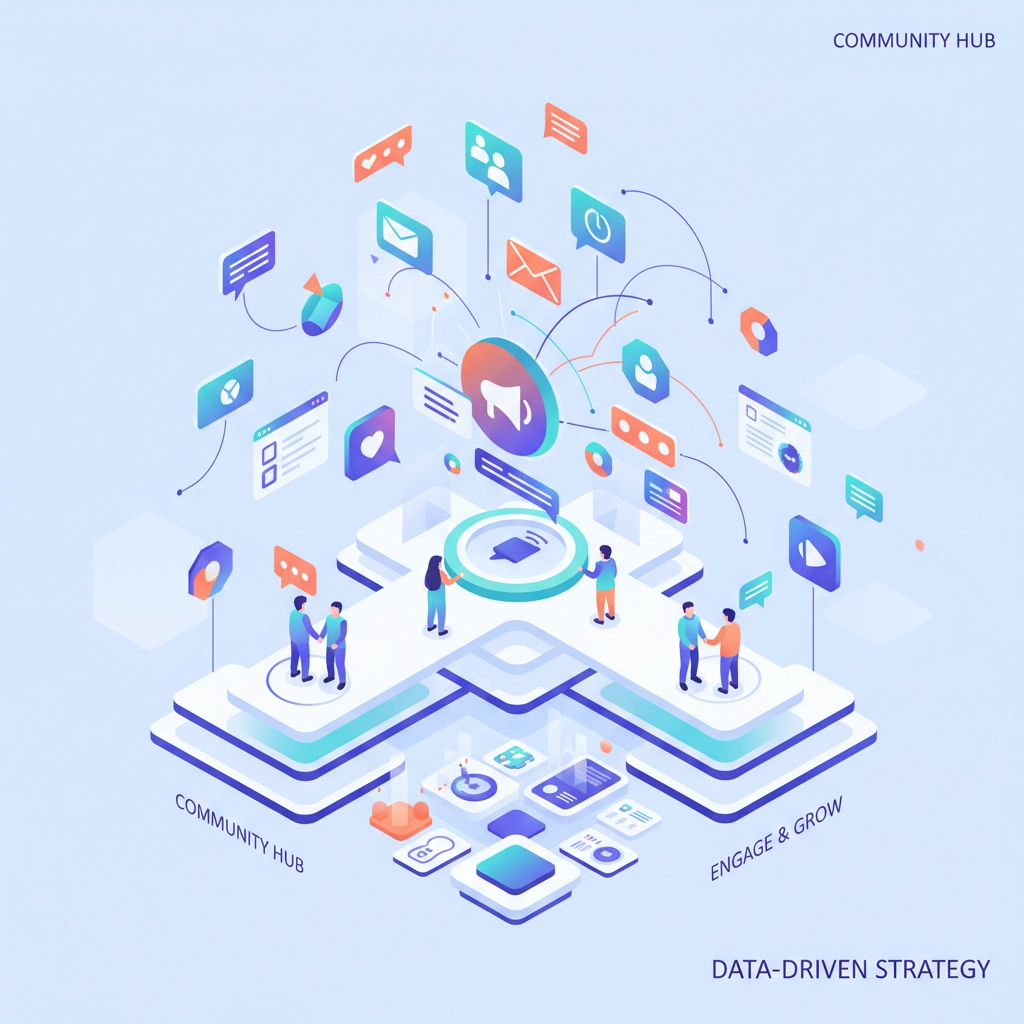
The marketing landscape has fundamentally shifted. Traditional advertising approaches that worked for decades are losing their effectiveness, while a new strategy is emerging as the dominant force: community-driven marketing. Smart businesses across every industry are abandoning outdated broadcast methods and building thriving communities around their brands instead.
This isn’t just another marketing trend: it’s a strategic response to changing consumer behavior and market dynamics. Companies implementing community-driven approaches are seeing 25% cost savings, dramatically improved customer retention rates, and conversion rates that eclipse traditional marketing by 300% or more.
The Death of Traditional Marketing Effectiveness
Traditional advertising faces a credibility crisis that’s only getting worse. Consumers have developed what marketers call “ad blindness”: they simply ignore or distrust conventional advertisements. The statistics tell the story clearly: when friends or family recommend a brand, customers are 84% more likely to trust it compared to paid advertising.
Consider the stark difference in conversion potential. Your probability of selling to a new customer through traditional advertising methods sits at just 5% to 20%. However, your chances of selling to an existing customer within a community reach 60% to 70%. This dramatic gap explains why businesses are rapidly pivoting their marketing strategies.
The rise of ad blockers, declining email open rates, and increased skepticism toward corporate messaging have created an environment where traditional marketing delivers diminishing returns on increasing investments. Businesses continuing to rely solely on these methods find themselves spending more money to reach fewer qualified prospects.

Understanding Community-Driven Marketing
Community-driven marketing centers on building genuine relationships and fostering environments where customers connect with each other and your brand. Rather than broadcasting messages to passive audiences, this approach creates interactive spaces where customers become active participants in your brand story.
Successful community-driven marketing encompasses several key elements:
Shared Values and Purpose: Communities form around common interests, challenges, or aspirations. Your brand serves as the catalyst that brings like-minded individuals together around shared goals or values.
Two-Way Communication: Instead of one-directional advertising, community marketing facilitates ongoing conversations between your brand and customers, and among customers themselves.
Value-First Approach: Community members receive consistent value through education, support, exclusive access, or meaningful connections: not just promotional messages.
User-Generated Content: Community members create content, share experiences, and advocate for your brand organically, providing authentic testimonials and social proof.
The Business Benefits of Community-Driven Marketing
Dramatically Reduced Customer Acquisition Costs
Building a community requires upfront investment, but the long-term financial benefits are substantial. Research indicates that 49% of brands using community forums achieve 25% cost savings compared to traditional marketing approaches. Once established, thriving communities generate organic word-of-mouth marketing, reducing dependency on expensive paid advertising campaigns.
Community members become voluntary brand ambassadors, sharing their positive experiences and recommendations within their own networks. This organic growth mechanism scales your marketing efforts without proportional increases in advertising spend.
Enhanced Customer Lifetime Value
Community marketing transforms casual customers into passionate advocates with much higher lifetime values. When customers feel like valued community members, they develop emotional attachments that transcend mere transactions. This emotional investment translates directly into increased purchase frequency, higher average order values, and extended customer relationships.
Businesses like Lululemon and Peloton demonstrate this principle effectively. Their communities create environments where customers don’t just buy products: they adopt lifestyles and identities connected to the brand, resulting in significantly higher customer lifetime values.

Invaluable Customer Intelligence
A thriving community provides direct access to customer needs, preferences, pain points, and emerging trends. This intelligence proves more valuable than expensive market research because it comes from engaged users who genuinely care about your success.
Community interactions reveal:
- Product improvement opportunities
- New service demands
- Content preferences
- Pricing sensitivities
- Competitive threats and advantages
This real-time feedback enables rapid adaptation and innovation, keeping your business aligned with customer expectations and market changes.
Authentic Social Proof and Credibility
Communities generate authentic social proof that resonates far more effectively than traditional testimonials or case studies. When potential customers see genuine conversations, problem-solving discussions, and success stories from real community members, trust develops naturally.
User-generated content from community members provides credible third-party validation that advertising cannot replicate. This organic credibility significantly improves conversion rates across all marketing channels.
Key Drivers Behind the Community Marketing Movement
Changing Consumer Expectations
Modern consumers, particularly younger demographics, prioritize authenticity, transparency, and shared values. They actively research brands through peer reviews and community discussions before making purchasing decisions. Traditional advertising messages carry less weight than authentic community conversations and peer recommendations.
The demand for personalization has intensified dramatically. Consumers expect tailored interactions and communications that resonate with their unique interests and preferences. Communities enable this personalization at scale by facilitating direct connections between brands and individual customers.
Social Media Evolution
The proliferation of social media platforms has fundamentally changed how people interact and make decisions. From Facebook groups to Discord servers, consumers naturally gravitate toward communities where they can connect with others who share their interests or challenges.
This social transformation has created expectations for brands to facilitate and participate in community interactions rather than simply broadcasting promotional messages.

Implementing Community-Driven Marketing Successfully
Choose the Right Platform
Select platforms where your target audience already congregates. This might include:
- Facebook Groups for broad community building
- LinkedIn Groups for B2B professional communities
- Discord servers for tech-savvy audiences
- Dedicated community platforms like Circle or Mighty Networks
- In-person meetups and events for local communities
Provide Consistent Value
Successful communities revolve around value delivery rather than promotional messaging. Focus on:
- Educational content addressing common challenges
- Exclusive access to resources, tools, or expertise
- Networking opportunities with other community members
- Recognition and celebration of member achievements
- Prompt, helpful responses to questions and concerns
Foster Member-to-Member Connections
The strongest communities encourage interactions among members, not just between members and the brand. Facilitate introductions, create collaboration opportunities, and recognize active community contributors. When members build relationships with each other, community engagement becomes self-sustaining.
Maintain Active, Authentic Engagement
Community building requires consistent participation from brand representatives. Respond promptly to questions, acknowledge contributions, share valuable insights, and maintain a helpful, authentic presence. Inconsistent engagement undermines community trust and participation.
Measuring Community Marketing Success
Track metrics that reflect genuine community health and business impact:
Engagement Metrics: Active user percentages, post frequency, comment ratios, and session duration indicate community vitality.
Growth Metrics: New member acquisition, retention rates, and referral rates demonstrate community attractiveness and sustainability.
Business Metrics: Lead generation from community activities, conversion rates for community members, customer lifetime value improvements, and customer acquisition cost reductions.
Qualitative Indicators: Member testimonials, user-generated content quality, and community sentiment reflect authentic engagement levels.

Real-World Community Marketing Examples
HubSpot’s Inbound Community: HubSpot built a massive community around inbound marketing education, providing free resources, certification programs, and networking opportunities. This community generates qualified leads continuously while establishing HubSpot as the authoritative voice in inbound marketing.
Salesforce Trailblazer Community: Salesforce created a learning-focused community where users share expertise, collaborate on projects, and advance their careers. This community strengthens customer relationships while reducing support costs and driving product adoption.
Local Business Communities: Many successful local businesses build communities around shared interests or causes. Fitness studios create communities around health and wellness goals. Restaurants build communities around culinary experiences and local culture.
Getting Started With Community-Driven Marketing
Begin by identifying your ideal community focus. What shared interests, challenges, or goals unite your target customers? What unique value can your expertise provide to address these common needs?
Start small with a focused group of engaged customers or prospects. Provide consistent value through educational content, exclusive resources, or meaningful connections. Gradually expand as engagement patterns establish and community culture develops.
Remember that community building requires patience and authentic commitment. Successful communities develop over months and years, not weeks. However, the long-term benefits: reduced marketing costs, improved customer retention, and organic growth: justify the investment for virtually every business.
Community-driven marketing isn’t just a trend: it’s the future of customer relationships in an increasingly connected world. Businesses that embrace this approach now will establish competitive advantages that become increasingly difficult for competitors to replicate.
Want expert help or a custom strategy? Email us at robert@digitaltrafficfactory.com or call 203-217-9496 and let’s make your content convert!
